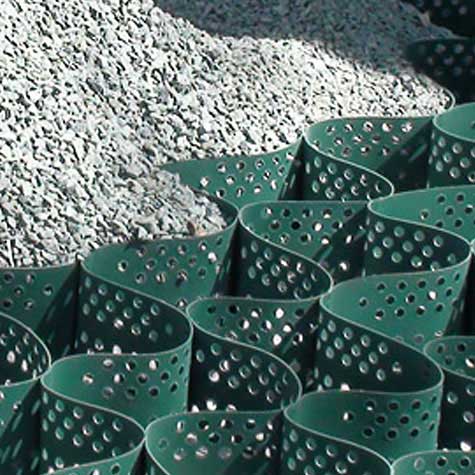The geocell is a three-dimensional mesh cell structure formed by reinforced HDPE sheet material through high-strength welding. It is generally formed by ultrasonic needle welding. Due to engineering needs, some holes are punched in the diaphragm.
characteristic:
1. It is flexible in expansion and contraction, and can be folded during transportation. It can be stretched into a net during construction and filled with loose materials such as soil, gravel and concrete to form a structure with strong lateral restrictions and large rigidity.
2. Light material, abrasion resistance, stable chemical performance, photooxidation resistance, acid and alkali resistance, suitable for different soils and deserts and other soil conditions.
3. High lateral restriction and anti-slip, anti-deformation, effectively enhance the bearing capacity of the roadbed and disperse the load.
4. Changing the geometric dimensions of geocell height, welding distance, etc. can meet different engineering needs.
5. Flexible expansion and contraction, small transportation volume; convenient connection and fast construction speed. Fundamental The reason why the geocell has excellent functions and has attracted the attention of the engineering community, we should also start with its basic principles. When describing its principle in foreign literature, it is called "a honeycomb three-dimensional confinement system, which can significantly improve the performance of ordinary filling materials in load-bearing and pest control applications in a large range." Its key principle is three-dimensional confinement. . Everyone knows that when a car is driving on the desert, it will press two deep tracks, the pressed part sinks deeply, and the two sides of the track will bulge high. If the vehicle behind continues to advance along the rut, the sunken part will sink further, and the bulge will bulge further, until the bulge touches the chassis and the sunken rut burys most of the wheels, making it impossible to move forward.
The reason for this is that when an external load acts on the surface of the foundation, according to Planttel theory and Taylor theory, it can be known that under the action of concentrated load, the active zone 1 sinks under pressure, and the force is decomposed and transmitted to both sides. The transition zone 2, the transition zone 2 is passed to the passive zone 3, and the passive zone will deform and bulge without restriction.
